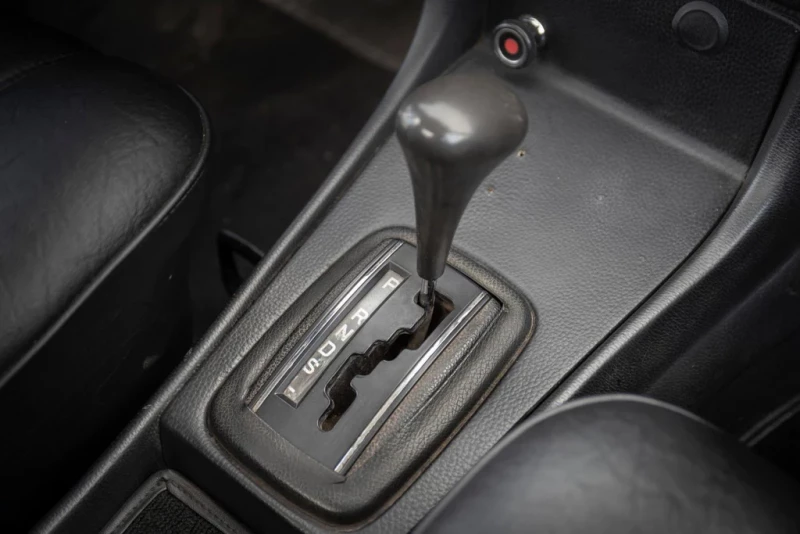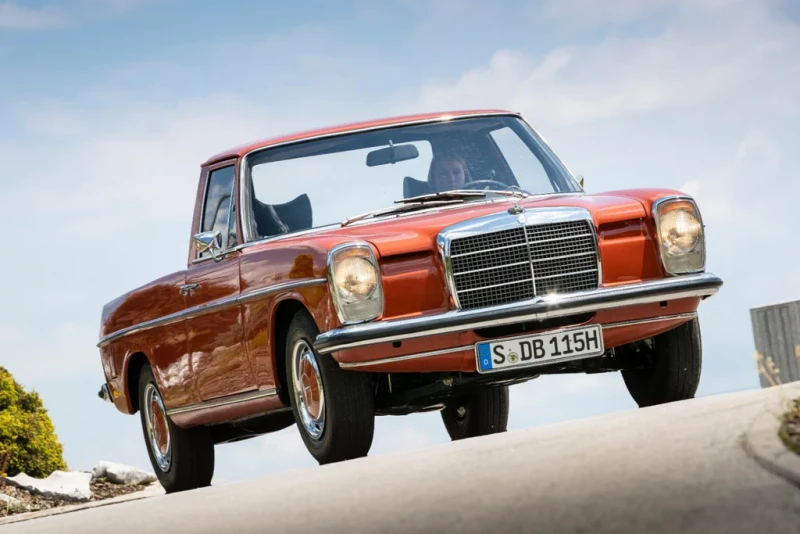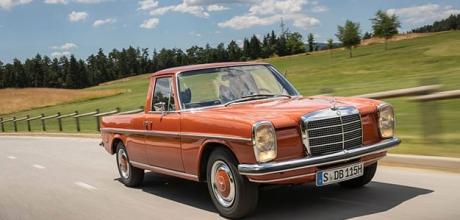1972 Mercedes-Benz 220D Automatic La Pick-Up W115
Mercedes-Benz’s W115 saloon was renowned around the world as a taxi. But in Argentina it became more useful as La Pick-up. Melanie May investigates.
Photography Mercedes-Benz
FOR TRUCK’S SAKE
MERCEDES-BENZ LA PICK-UP Utilitarian approach to a 1970s saloon
What is it they say about necessity being the mother of invention? The proverb could be rewritten to explain the existence of many a fascinating classic car. Or, indeed, truck. So before we get behind the wheel of the somewhat unexpected pick-up before us, it’s worth considering why it exists in the first place.

Mercedes-Benz has a long history in Argentina. After World War Two, the country saw rapid industrial and agricultural development, but the transport infrastructure was poor — the car fleet was almost obsolete and the rail network was insufficient to satisfy demand. Mercedes was quick to capitalise on the growing need for vehicles when, in 1951, it opened the Gonzalez Catan facility in Buenos Aires Province, the first Mercedes factory outside Europe. The company builds the Sprinter van there to this day.

Fast-forward to the 1970s, a time of liberation for many, and there was a severe restriction on imports thanks to taxes on manufactured products: a stiff 95% on passenger cars and 65% even on utility vehicles. Therefore, to avoid costly import taxes, manufacturers brought vehicles into Argentina as CKD (Complete Knocked Down) kits and assembled them locally. Furthermore, because the tariffs were lower on utility vehicles, many factories converted normal cars to commercial usage and sold them as station wagons and pick-up trucks.

Yet this was not the only reason for creating more trucks. In the 1970s, agriculture made up a significant part of Argentina’s economy and commercial vehicles were in high demand. It was the combination of these factors that led Mercedes-Benz Argentina to import CKD kits of the W115 saloon and convert them into stroke-eight’ pick-ups — the W114 and W115 series of cars were nicknamed strich acht because they had come to the market in 1968.
Workers at the Mercedes-Benz Argentina plant fitted unique platforms into the floorpan aft of the B-pillar and local dealers distributed the result. Production of ‘La Pick-up’, as it was affectionately known by Argentinians, began in 1972. It was available in both single- and double-cab form, the latter pretty much a W115 saloon without its boot-lid, and both offered a load capacity of up to 650kg. The La Pick-up was available only as a 220d, powered by Mercedes’ 2.2-litre OM615 four-cylinder diesel engine, which produced 60bhp and 93lb ft of torque — just about enough for a farming workhorse. It is estimated that between 6000 and 6500 pick-ups were built between 1972 and 1976.

Although the La Pick-up was designed for the Argentinian market, some examples made it to Europe — such as the example you see here. It was bought by the Stuttgarter Strassenbahnen AG railway company (now the principal public transport provider in Stuttgart), which rebuilt the rear and side panels to suit its specific needs and then used it for many years as a service vehicle for the lubrication of rail points. Following this duty, a private owner bought it and it changed hands several times after that. At some stage, someone changed the original ochre paint colour to green. It was then converted into a camper with a closed-off tailgate, and the La Pick-up’s original vertical tail-lights were replaced with the horizontal lamps of the W115 saloon.

When Thomas Konzelmann from Daimler AG bought it in 2012, it was ‘close to its end — more paint than metal’. The engine was low on compression yet, despite the terrible condition, Konzelmann paid the equivalent of about £1400 for it. However, the classic experts at Mercedes aren’t known to shy away from a challenge and, while they were preparing for the unveiling of the Mercedes X-Class pick-up, a decision was made to restore the La Pick-up’s exterior (in a period colour known as ‘English Red’) and its interior to a suitably high standard, for display at its descendant’s driving debut. Coincidentally, that was to be in Chile, Argentina’s neighbour.
Above and opposite — Details and fittings are very much as per the W115 saloon; a fleet of La Pick-ups in period — you can just make out the vertical tail-lights that allowed unimpeded access to the loadbay; original brochure shot shows a La Pick-up in service at Buenos Aires airport.
‘THE START-UP RITUAL HARKS BACK TO A TIME WHEN YOU COULD SMOKE ON PLANES'
It’s fair to say that the static La Pick-up received a huge amount of interest from the media, so Mercedes forged ahead with rebuilding the engine and mechanicals, with the intention of allowing it to be driven. Now it is part of the Mercedes-Benz historical collection and completely roadworthy.
As you slide onto the wide, comfortable black vinyl seats, the heavy (if short: there was no two-door W115) door falls shut with a reassuring thud. No doubt that, at one stage, the ashtray overflowed with Marlboro Red the cabin is spotless. All traces of its gaucho past have been erased. The interior is identical to the Wil5 saloons, apart from a vertical partition behind the B-pillar with a glass window. This design maximises space for the wood-lined loadbay, but forces the driver to sit bolt upright as the seats do not recline.
Behind the huge four-spoke steering wheel is a simple instrument binnacle with a speedometer on the right and a set of auxiliary gauges on the left. An analogue clock sits between them and there are sliding ventilation controls above the centre console. Nearly half a century old, but all working and easy to use.
The start-up ritual harks back to a time when you could smoke on planes and flares were fashionable. Turn the key halfway and pull a choke-like starter knob to operate the glow plugs. Mercedes added an extra loop of resistance wire in series with the plugs and mounted it behind what appears to be a small circular vent beneath the instrument binnacle: when the plugs are up to temperature, the wire shimmers bright orange. Then you pull the starter knob the rest of the way out and the four-cylinder engine rattles into life, sending vibrations through the pedals, steering wheel and seat. Give it a minute and it settles, but it’s always a rather agricultural grumble.
Pull the transmission selector through its meandering gate to the ‘D’ position, tug a small handle to the left of the steering wheel to release the parking brake and the La Pick-up is in motion — albeit slow motion. Pressing the throttle gives a feeling more of resistance than actual acceleration. There’s no power-assistance for the recirculating-ball steering and, although the thin steering wheel rim is thankfully quite broad, it takes some effort to steer even when on the move — and this truck has a real tendency to wander if you don’t stay focused.
Out on the open road, the rear-wheel-drive pick-up begins to feel a little torquier than official figures suggest (a contemporary document quotes 0-62mph in 31 seconds), and the all-independent suspension smooths out rougher surfaces and handles potholes well, with remarkably little shudder through the structure. Despite its tough demeanour, the La Pick-up weighs only 1450kg, perfect for tiptoeing over soft ground when the road comes to an end.
Today, La Pick-ups can still be found rattling around the roads of South America, carrying heavy loads up and down the Andes, which is testament to the build quality achieved at Gonzalez Catan. And while the La Pick-up was made only for this market, it cultivated a dedicated fan base. A fastidiously restored example like this one would surely make for a quirky investment elsewhere in the world. You know where to start looking.


